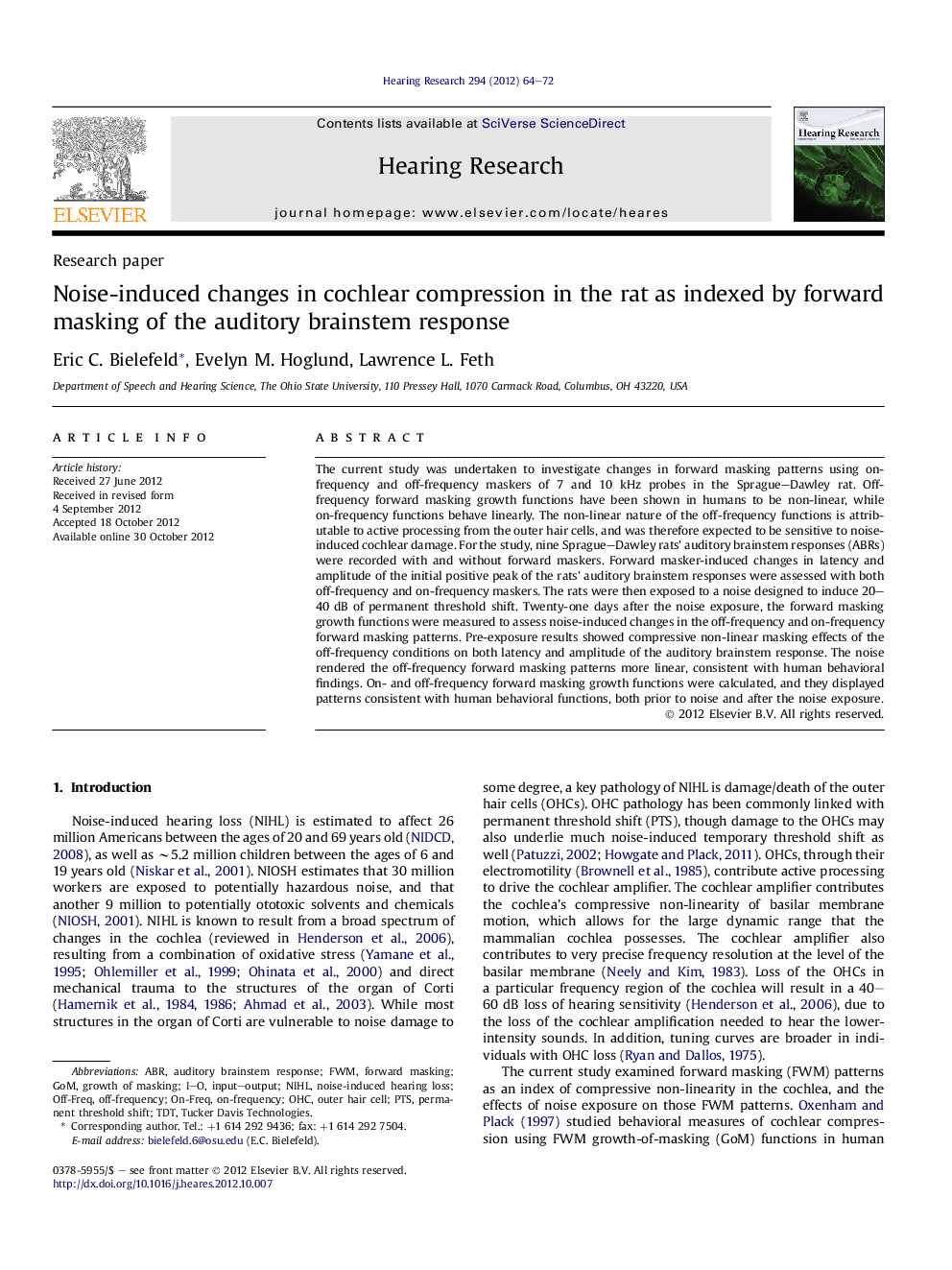| کد مقاله | کد نشریه | سال انتشار | مقاله انگلیسی | نسخه تمام متن |
|---|---|---|---|---|
| 4355280 | 1615606 | 2012 | 9 صفحه PDF | دانلود رایگان |

The current study was undertaken to investigate changes in forward masking patterns using on-frequency and off-frequency maskers of 7 and 10 kHz probes in the Sprague–Dawley rat. Off-frequency forward masking growth functions have been shown in humans to be non-linear, while on-frequency functions behave linearly. The non-linear nature of the off-frequency functions is attributable to active processing from the outer hair cells, and was therefore expected to be sensitive to noise-induced cochlear damage. For the study, nine Sprague–Dawley rats' auditory brainstem responses (ABRs) were recorded with and without forward maskers. Forward masker-induced changes in latency and amplitude of the initial positive peak of the rats' auditory brainstem responses were assessed with both off-frequency and on-frequency maskers. The rats were then exposed to a noise designed to induce 20–40 dB of permanent threshold shift. Twenty-one days after the noise exposure, the forward masking growth functions were measured to assess noise-induced changes in the off-frequency and on-frequency forward masking patterns. Pre-exposure results showed compressive non-linear masking effects of the off-frequency conditions on both latency and amplitude of the auditory brainstem response. The noise rendered the off-frequency forward masking patterns more linear, consistent with human behavioral findings. On- and off-frequency forward masking growth functions were calculated, and they displayed patterns consistent with human behavioral functions, both prior to noise and after the noise exposure.
► Forward masking of ABR latency and amplitude was tested in rats.
► Growth of masking functions were measured before and after noise exposure.
► Off-frequency growth of masking functions were non-linear, compressive pre-noise.
► Noise exposure rendered off-frequency growth of masking functions more linear.
Journal: Hearing Research - Volume 294, Issues 1–2, December 2012, Pages 64–72